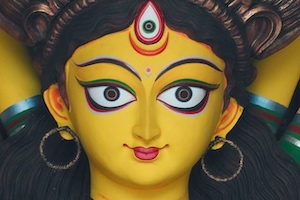Govt, varsity step in to save Purulia’s white forest flames
Times of India | 10 March 2025Experts are also working on vegetative propagation to increase the count of these rare trees. Now Purulia is experiencing abundant palash blooms, with photographs circulating on social media drawing numerous visitors. Peak flowering is anticipated during the forthcoming Holi festival.
The rare white palash trees are distributed across Raghunathpur, Jhalda, Ajodhya, Balarampur, Bandawan, Kashipur, Puncha and Hura. The administration maintains confidentiality regarding exact locations and ownership details.
"The forest department has already made a protective vegetative barrier with thorny shrubs surrounding the tree so that no one is able to reach its vicinity," said Anjan Guha, divisional forest officerPurulia. The department has heightened surveillance through forest management committees (FMC) and increased patrols. Jaleshwar Laya, an Ajodhya Hill farmer and FMC member said, "Due to high tourist season and full blooming season of palash we have been put on high alert now."
The palash tree produces bright orange or red flowers, with some yellow variants also present in Purulia. White palash is rare. Visitors often damage the trees by plucking flowers or cutting branches during bloom season. "We are also putting banners and spreading handbills as part of the awareness measures to protect all kinds of palash which has started from Feb 15," Guha added, anticipating the flowering season to conclude around Apr 15.
A district official said, "Tourism is an important source of income for many people here and we are encouraging it but we are also trying to spread awareness to conserve palash by reaching locals, villagers, tourist car drivers as well as hotel and homestay authorities." Local beliefs suggest white flowers and bark extracts can address infertility issues. "We found that the trunk of the tree was often badly nailed in the process of collecting the extracts and the bark of the tree sometimes badly taken off," said Subrata Raha, former HoD and professor of botany department in SKBU.
After identifying a white palash in Rakab forest last year, Raha initiated protection measures and research. Plans include tissue culture propagation starting this monsoon.
